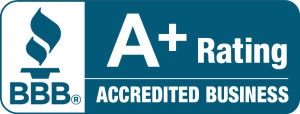If you have a concentrated stock position but don’t want to sell, there are some options available to you.
Options are contracts that allow you to buy or sell a stock at a predetermined price by a predetermined time.
Before we explore the range of solutions available through using them, bear in mind that options also can involve substantial risk and are not suitable for all investors.
Make sure to receive a copy of “Characteristics and Risks of Standardized Options.” Copies of this document may be obtained from your financial professional and are also available at http://www.theocc.com/.
Protective Puts
Buying a protective put essentially puts a floor under the value of your shares by giving you the right to sell your shares at a predetermined price.
Buying put options that can be exercised at a price below your stock’s current market value can help limit potential losses on the underlying equity while allowing you to continue to participate in any potential appreciation or
dividends paid.
Keep in Mind:
- You also would lose money on the option itself if the stock’s price remains above the put’s strike price.
- You’ll need to balance the cost of the premium you will pay for the options contract against the potential losses you could incur in your concentrated position.
- In effect, you’re paying to have the put function as partial insurance for your shares.
- Over-the-counter option contracts may be thinly traded. That means that if you want to sell your put, there is no guarantee you’ll find a buyer.
- If you buy a put and sell your shares, you’ll likely have a capital gain or loss on the shares.
- Consider whether you would be prepared to sell your shares and face any possible adverse
tax consequences.
- Consider whether you would be prepared to sell your shares and face any possible adverse
Covered Calls
Selling covered calls with a strike price above the market price can provide additional income from your holdings that could help offset potential losses if the stock’s price drops.
By selling the calls, you’re agreeing to sell your shares to another investor at the call’s strike price, which is almost certain to happen if the stock’s price rises above the strike price.
This strategy is known as a covered call. Because you already own the stock, you’re covered in case you are obligated to turn over shares. However, if the stock price never reaches that point, you’ll retain the premium you were paid for
the call.
The tradeoffs with covered calls include:
- Being exposed to downside risk on the stock holding, which could exceed any gain from selling the calls.
- If the price reaches the call’s strike price, you would have to sell shares to meet the call (unless you were able to buy back the call contract). Depending on how much you paid, this could trigger capital gains taxes.
- Sales of restricted stock are still subject to SEC rules that govern the timing and volume of such sales.
If you decide you want to sell shares before the call option expires, you’ll have to close out the call contract before you can sell your shares.
However, there is no guarantee you’ll be able to do so, and you could pay more to unwind the position than you were paid for the option originally (though that loss also might be offset by profit on the sale of the shares themselves).
Collars
A collar involves buying not only protective puts to limit your losses on the underlying stock but also selling call options whose premiums offset the cost of the puts.
A collar can be a very flexible strategy in terms of the maturity dates and strike prices it involves. But as with a covered call, the upside appreciation on your concentrated position is then limited to the call’s strike price.
If that price is reached before the collar’s expiration date, you would not only lose the premium you paid but unless you could unwind the position by buying back the calls (and there is no guarantee that you would be able to do so) you might also face capital gains taxes on shares you were required to sell.
Keep in Mind:
- Be careful about closing one side of the collar while the other side of the trade remains outstanding.
- You could potentially suffer a loss if you had to repurchase shares at a higher price to fulfill the call.
- The prices set for a collar must not violate the rules against a so-called constructive sale.
- Under the Taxpayer Relief Act of 1997, a hedging strategy that eliminates all risk is effectively a sale and thus subject to capital gains taxes.
- Seek expert advice on selecting strike prices that avoid triggering the constructive sale rules.
- Transaction costs in multiple-leg options strategies, such as a collar, can be significant and should be considered as these strategies involve multiple commissions, fees, and charges.
Monetize the Position
This option means deriving immediate cash from an asset, which does not necessarily mean selling the asset. For example, a home equity loan is a way of monetizing the value of your house without selling it.
Prepaid Variable Forward (PVF) Agreements
If you want immediate liquidity, you might be able to use a PVF.
With a PVF, you contract to sell your shares later at a minimum specified price. You receive most of the payment for those shares, typically 80 to 90% of their value, when the agreement is signed.
However, you’re not obligated to relinquish ownership of the shares or pay taxes on the sale until the PVF’s maturity date, which might be years in the future. In the meantime, your stock is held as collateral, and you can use the upfront payment in any way you choose.
When you reach the expiration date, you have two options:
- Turning over the shares – Your capital gain or loss will be recognized at that time, and you’ll owe tax on the difference between your cost basis in those shares and the amount you received when you signed the PVF.
- Settling the PVF with cash – You’ll postpone capital gains taxes on your stock holding. However, any gains or losses from the hedge itself (i.e., the difference between the share price you received upfront and the share price you pay to settle the agreement) are subject to immediate taxation when the PVF is settled.
Consider that a cash settlement can bring on a problem known as straddle taxation. Any gains that result from the hedge itself may be taxable at short-term capital gains rates. That could turn a long-term gain on the underlying shares into a short-term gain taxed at higher rates.
Also, you may not be able to deduct losses on the hedge until the stock itself is sold. A tax professional can help you compare the tax consequences of a cash settlement to the potential savings from deferring the capital gains tax on
your shares.
Keep in Mind:
- Restricted securities that underlie over-the-counter option contracts are still subject to Rule 144 provisions governing the timing and volume of sales.
- Options contracts based on restricted securities may need to be settled with cash rather than the
securities themselves. - A PVF typically sets a minimum price at which the stock will be valued, but the final value is dependent on the price of the stock when the contract matures.
- If the price is somewhere between the minimum and the cap price, you owe an equivalent number of shares based on that price.
- If the price is above the cap, the number of shares you owe will be based on the minimum price specified by the contract plus the difference between that floor price and the capped price.
- A PVF can be very flexible, allowing you to tailor the contract’s minimum and cap prices as well as the prepayment amount, maturity date, and whether you settle in shares or cash.
- However, you’ll give up any price appreciation above the cap price and you won’t know in advance the exact number of shares you’ll turn over.
- A PVF is also not a loan, so you won’t owe interest on the upfront payment you receive.
- If you own restricted shares and are subject to Rule 144, you’ll still need to follow SEC regulations disclosing the prepaid variable forward contract to the SEC.
- PVFs must also be carefully structured, so care needs to be taken with PVFs to avoid triggering an audit or immediate capital gains taxes.
Borrowing to Diversify
Maybe you want to hold onto your stock but need money to build a more diversified portfolio. If so, you can use your stock as collateral to buy into other positions on margin.
Typical initial margin requirements specify that you have at least 50 percent of the value of your margin purchases in stock or cash. So if you have $50,000 worth of shares, you could use them as collateral to purchase an additional $50,000 worth of securities on margin.
You’ll owe interest on that $50,000, which you’re borrowing from the broker, though the interest may be deductible. Though buying on margin can help you diversify, you’re still exposed to the downside risk of your original stock holding.
Exchange Your Shares
Another possibility is to trade highly-appreciated stock for shares in an exchange fund, which is a private placement limited partnership that pools your shares with those contributed by other investors who may also have concentrated stock positions.
After a set period, generally seven years, each of the exchange fund’s shareholders is entitled to a prorated portion of its portfolio. Taxes are postponed until you sell those new portfolio shares, and you pay taxes on the difference between the value of the stock you contributed and the price received for your exchange-fund shares.
Though it provides no liquidity and typically little or no income during the seven-year holding period, an exchange fund may help minimize taxes while providing greater diversification (though diversification alone does not guarantee a profit or ensure against a loss).
Be sure to check on the costs involved with an exchange fund, such as a sales load and other fees, as well as what other securities it holds. At least 20% of an exchange fund’s holdings must be in non-publicly traded assets, commodity interests, or real estate.
Also, you want to ensure that you aren’t exchanging your shares for a portfolio of low-quality stocks.
Donate Your Shares
Another possibility for dealing with a concentrated stock position is to donate your shares, which eliminates your capital gains tax liability.
Some methods provide an immediate tax deduction, while others offer ongoing income, enabling you to avoid paying capital gains or estate taxes on highly appreciated shares or offer a combination of benefits.
Donating to a Charitable Remainder Trust
If you’re philanthropically minded and have highly appreciated stock, consider donating shares to a charitable remainder trust (CRT).
What are the Pros?
- You receive a tax deduction when you contribute.
- Typically, the trust can sell the stock without paying capital gains taxes and reinvest the proceeds to provide an income stream for you as the donor.
- When the trust is terminated, the designated charity retains the remaining assets.
- You can set a payout rate that meets both your financial objectives and your philanthropic goals, and because the principal is not reduced by taxes, the income generated may be greater than if you had sold the asset yourself.
What are the Cons?
- Your donation is irrevocable, and the income payments are fixed, which means their value will be affected over time by inflation.
Donating to a Charitable Lead Trust
A charitable lead trust (CLT) is in many ways a mirror image of a CRT.
With a typical CLT, the charity receives the income stream for a specified time. The rest goes to your beneficiaries. You receive no tax deduction for transferring assets to it unless you name yourself the trust’s owner, in which case you’ll pay taxes on the income it generates each year.
A charitable lead trust can be an excellent vehicle if you believe your stock has a bright future and want your heirs to benefit from it, but also want to reduce the potential tax liability to your estate.
Donate to Charity
By donating stock directly to a qualified charity rather than selling it and donating the proceeds, you will not only remove it from your taxable estate but avoid paying capital gains taxes. In effect, the donation costs you less because of the tax benefit you receive.
A charity must qualify as a 501(c)(3) nonprofit organization as defined by the IRS for you to receive a tax deduction for the donation. Although most tax-exempt organizations qualify, some don’t. A charity will know its status, and you can verify it by using IRS Publication 78, a version of which is searchable online.
There may be limitations on the amount you can donate in any one year and still receive the deduction. The limits are based on a percentage of your adjusted gross income and how long you’ve held the stock.
Donate to a Private Foundation
This option enables you to take the immediate tax deduction in the year of your donation and avoid capital gains taxes on a stock sale.
A donor-advised fund can be set up as part of a larger charitable organization, for example, a community foundation in your hometown. A donor-advised fund enables you to track your contributions and suggest specific grants and philanthropic causes you would like the money to support.
Though the charity is not legally obliged to follow your recommendations, in practice they typically do so (subject to legal constraints, such as making sure the grants go to a 501(c)(3) nonprofit organization).
You may have a limited amount of ability to determine how your contributions are invested, and any returns on your stock are added to the money available in your charitable account for grantmaking.
Unlike a private foundation, your grant recommendations can be made anonymously. Also, the percentage of AGI that you can contribute in any one year and still qualify for a tax deduction is higher than that of a private foundation (though again, you should consult a tax professional who can review your situation).
You can donate your stock and take your time to decide how you would like to support specific charitable efforts. In addition to donating publicly traded stock, you may also be able to donate restricted stock and LLC or other limited-partnership interests.
Conclusion
There are a lot of options for handling a concentrated position. Which one to choose depends on your unique situation.
As experienced financial professionals, we are here to help you overcome the obstacles that investors often face so you can seize the opportunities before you. We’re here to serve as a resource for you to discuss your current financial situation and future goals.
Please contact us and let us help you discover your dream life by securing your future through investing. We would be delighted to go on the journey with you.










